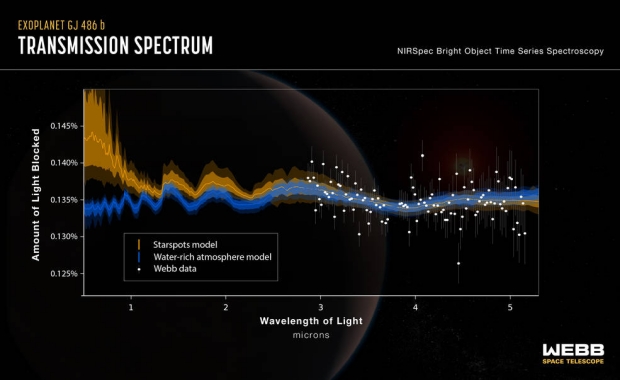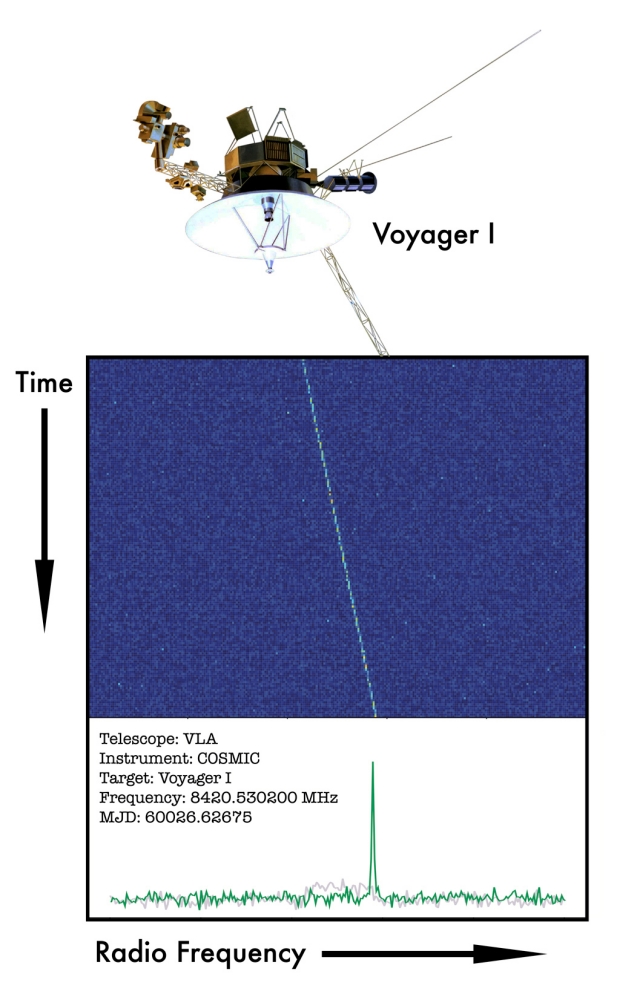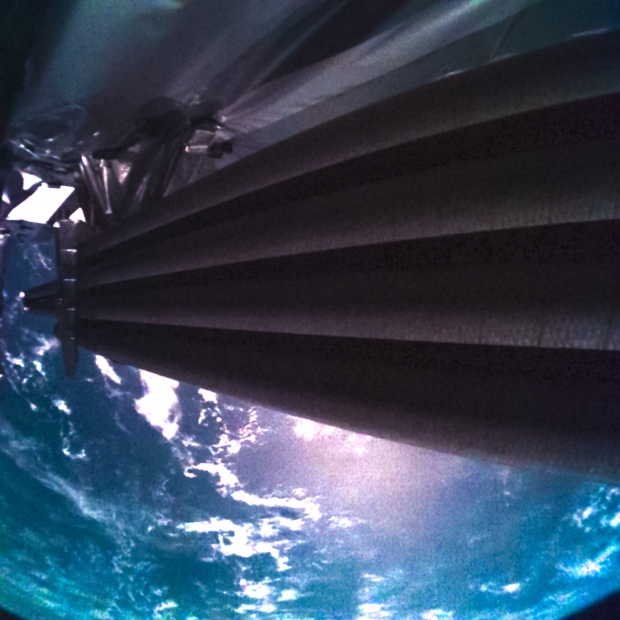Did Carl Sagan play a role in the famous Arecibo message transmitted toward the Hercules Cluster in 1974? I’ve always assumed so, given Sagan’s connection with Frank Drake, who was then at Cornell University, where Sagan spent most of his career. But opinion seems to vary. Artist/scientist Joe Davis, who now has affiliations with both MIT’s Laboratory of Molecular Structure and Harvard Medical School, noted in an email this morning that Sagan’s widow, Ann Druyan, supports the connection, but according to Davis, Drake himself denied Sagan’s role in the composition or transmission of the message. I mention all this because of Tuesday’s post on the simulated SETI signal being sent via ESO’s Mars ExoMars Trace Gas Orbiter, as a kind of work of art in its own right as well as a test case in building public involvement in the decoding of an unusual message. The idea of doing that irresistibly recalled Joe Davis because in 1988 Davis performed his own act of scientific art involving SETI,...
Links for IRG Interstellar Symposium in Montreal
The preliminary program for the Interstellar Research Group’s 8th Interstellar Symposium in Montreal is now available. For those of you heading to the event, I want to add that the early bird registration period for attending at a discount is May 31. Registration fees go up after that date. Registering at the conference hotel can be handled here. Registration before the 31st is recommended to get a room within the block reserved for IRG.
First Contact: A Global Simulation
Now and again scientists think of interesting ways to use our space missions in contexts for which they were not designed. I’m thinking, for example, of the ‘pale blue dot’ image snapped by Voyager 1 in 1990, an iconic view that forcibly speaks to the immensity of the universe and the smallness of the place we inhabit. Voyager’s cameras, we might recall, were added only after a debate among mission designers, some of whom argued that the mission could proceed without any cameras aboard. Fortunately, the camera advocates won, with results we’re all familiar with. Now we have a project out of The SETI Institute that would use a European Space Agency mission in a novel way, one that also challenges our thinking about our place in the cosmos. Daniela de Paulis, who serves as artist in residence at the institute, is working across numerous disciplines with researchers involved in SETI and astronautics to create A Sign in Space, the creation of an ‘extraterrestrial’ message. This is not a...
Remembering Jim Early (1943-2023)
I was saddened to learn of the recent death of James Early, author of a key paper on interstellar sail missions and a frequent attendee at IRG events (or TVIW, as the organization was known when I first met him). Jim passed away on April 28 in Saint George, UT at the age of 80, a well-liked figure in the interstellar community and a fine scientist. I wish I had known him better. I ran into him for the first time in a slightly awkward way, which Jim, ever the gentleman, quickly made light of. What happened was this. In 2012 I was researching damage that an interstellar sail mission might experience in the boost phase of its journey. Somewhere I had seen what I recall as a color image in a magazine (OMNI?) showing a battered, torn sail docked in what looked to be a repair facility at the end of an interstellar crossing. It raised the obvious question: If we did get a sail up to, say, 5% of the speed of light, wouldn’t even the tiniest particles along the way create significant damage...
Assembly theory (AT) – A New Approach to Detecting Extraterrestrial Life Unrecognizable by Present Technologies
With landers on places like Enceladus conceivable in the not distant future, how we might recognize extraterrestrial life if and when we run into it is no small matter. But maybe we can draw conclusions by addressing the complexity of an object, calculating what it would take to produce it. Don Wilkins considers this approach in today's essay as he lays out the background of Assembly Theory. A retired aerospace engineer with thirty-five years experience in designing, developing, testing, manufacturing and deploying avionics, Don tells me he has been an avid supporter of space flight and exploration all the way back to the days of Project Mercury. Based in St. Louis, where he is an adjunct instructor of electronics at Washington University, Don holds twelve patents and is involved with the university’s efforts at increasing participation in science, technology, engineering, and math. Have a look at how we might deploy AT methods not only in our system but around other stars. by Don...
Game Changer: Exploring the New Paradigm for Deep Space
The game changer for space exploration in coming decades will be self-assembly, enabling the growth of a new and invigorating paradigm in which multiple smallsat sailcraft launched as ‘rideshare’ payloads augment huge ‘flagship’ missions. Self-assembly allows formation-flying smallsats to emerge enroute as larger, fully capable craft carrying complex payloads to target. The case for this grows out of Slava Turyshev and team’s work at JPL as they refine the conceptual design for a mission to the solar gravitational lens at 550 AU and beyond. The advantages are patent, including lower cost, fast transit times and full capability at destination. Aspects of this paradigm are beginning to be explored in the literature, as I’ve been reminded by Alex Tolley, who forwarded an interesting paper out of the University of Padua (Italy). Drawing on an international team, lead author Giovanni Santi explores the use of CubeSat-scale spacecraft driven by sail technologies, in this case ‘lightsails’...
An Ice Giant’s Possible Oceans
Further fueling my interest in reaching the ice giants is a study in the Journal of Geophysical Research: Planets that investigates the possibility of oceans on the major moons of Uranus. Imaged by Voyager 2, Uranus is otherwise unvisited by our spacecraft, but Miranda, Ariel, Titania, Oberon and Umbriel hold considerable interest given what we are learning about oceans beneath the surface of icy moons. Hence the need to examine the Voyager 2 data in light of updated computer modeling. Julie Castillo-Rogez (JPL) is lead author of the paper: “When it comes to small bodies – dwarf planets and moons – planetary scientists previously have found evidence of oceans in several unlikely places, including the dwarf planets Ceres and Pluto, and Saturn’s moon Mimas. So there are mechanisms at play that we don’t fully understand. This paper investigates what those could be and how they are relevant to the many bodies in the solar system that could be rich in water but have limited internal...

GJ 486b: An Atmosphere around a Rocky M-dwarf Planet?
I might have mentioned the issues involving the James Webb Space Telescope’s MIRI instrument in my earlier post on in-flight maintenance and repair. MIRI is the Mid-Infrared Instrument that last summer had issues with friction in one of the wheels that selects between short, medium and longer wavelengths. Now there seems to be a problem, however slight, that affects the amount of light registered by MIRI’s sensors. The problems seem minor and are under investigation, which is a good thing because we need MIRI’s capabilities to study systems like GJ 486, where a transiting rocky exoplanet may or may not be showing traces of water in an atmosphere that may or may not be there. MIRI should help sort out the issue, which was raised through observations with another JWST instrument, the Near-Infrared Spectrograph (NIRSpec). The latter shows tantalizing evidence of water vapor, but the problem is untangling whether that signal is coming from the rocky planet or the star. This points to an...
GJ 486b: An Atmosphere around a Rocky M-dwarf Planet?
I might have mentioned the issues involving the James Webb Space Telescope’s MIRI instrument in my earlier post on in-flight maintenance and repair. MIRI is the Mid-Infrared Instrument that last summer had issues with friction in one of the wheels that selects between short, medium and longer wavelengths. Now there seems to be a problem, however slight, that affects the amount of light registered by MIRI’s sensors. The problems seem minor and are under investigation, which is a good thing because we need MIRI’s capabilities to study systems like GJ 486, where a transiting rocky exoplanet may or may not be showing traces of water in an atmosphere that may or may not be there. MIRI should help sort out the issue, which was raised through observations with another JWST instrument, the Near-Infrared Spectrograph (NIRSpec). The latter shows tantalizing evidence of water vapor, but the problem is untangling whether that signal is coming from the rocky planet or the star. This points to an...

Voyager as Technosignature
Here’s an image that brings out the philosopher in me, or maybe the poet. It’s Voyager 1, as detected by a new processing system called COSMIC, now deployed at the Very Large Array west of Socorro, New Mexico. Conceived as a way of collecting data in the search for technosignatures, COSMIC (Commensal Open-Source Multimode Interferometer Cluster) taps data from the ongoing VLASS (Very Large Array Sky Survey) project and shunts them into a receiver designed to spot narrow channels, on the order of one hertz wide, to spot possible components of a technosignature. Technosignatures fire the imagination as we contemplate advanced civilizations going about their business and the possibility of eavesdropping upon them. But for me, the image below conjures up thoughts of human persistence and a gutsy engagement with the biggest issues we face. Why are we here, and where exactly are we in the galaxy? In the cosmos? Spacecraft like the Voyagers were part of the effort to explore the Solar...

Working the Problem: Deep Space Repair
RIME (Radar for Icy Moons Exploration) is the first instrument ever deployed to the outer Solar System that can make direct measurements of conditions below the surface of an object. That makes it precisely tailored for Europa as well as Ganymede and Callisto, two other Galilean moons that also seem to have an internal ocean. Consider it a radar ‘sounder’ that can penetrate up to 9 kilometers below surface ice. RIME is a major part of why JUICE is going to the moons of Jupiter. Consider it problematic as well, at least for the moment, while controllers working the JUICE mission try to solve an unexpected deployment issue. The 16-meter long antenna shows movement, but continues to have trouble in becoming released from its mounting bracket. The antenna is currently about a third of its full intended length, according to ESA, partially extended but still stowed away. Image: Shortly after launch on 14 April, ESA’s Jupiter Icy Moons Explorer, JUICE, captured this image with its JUICE...

